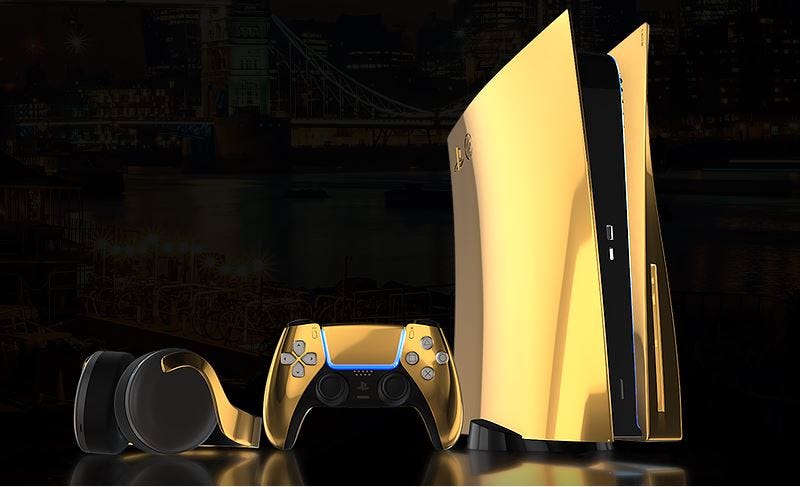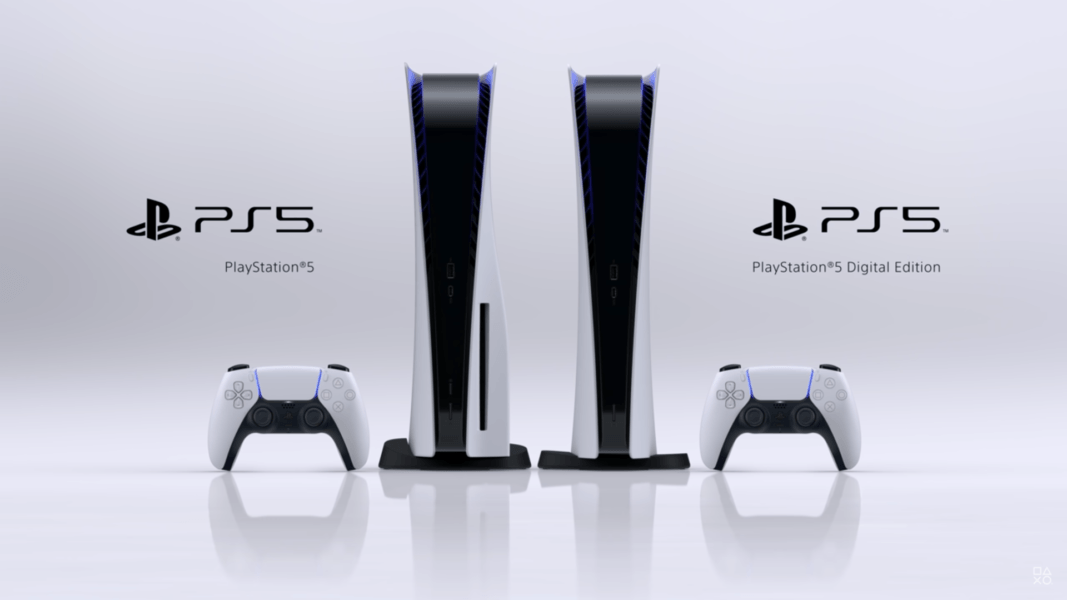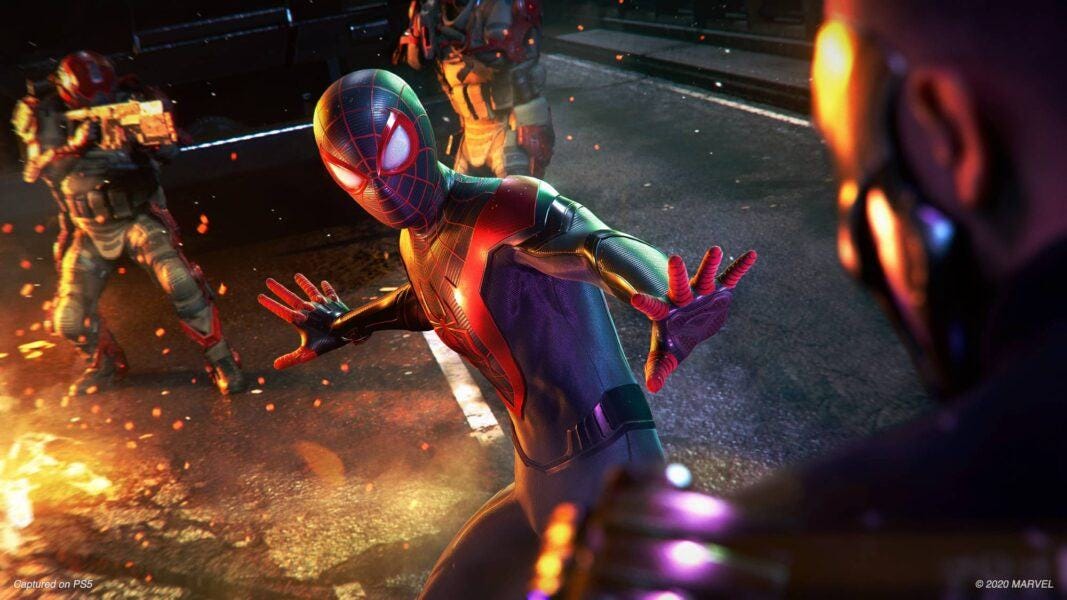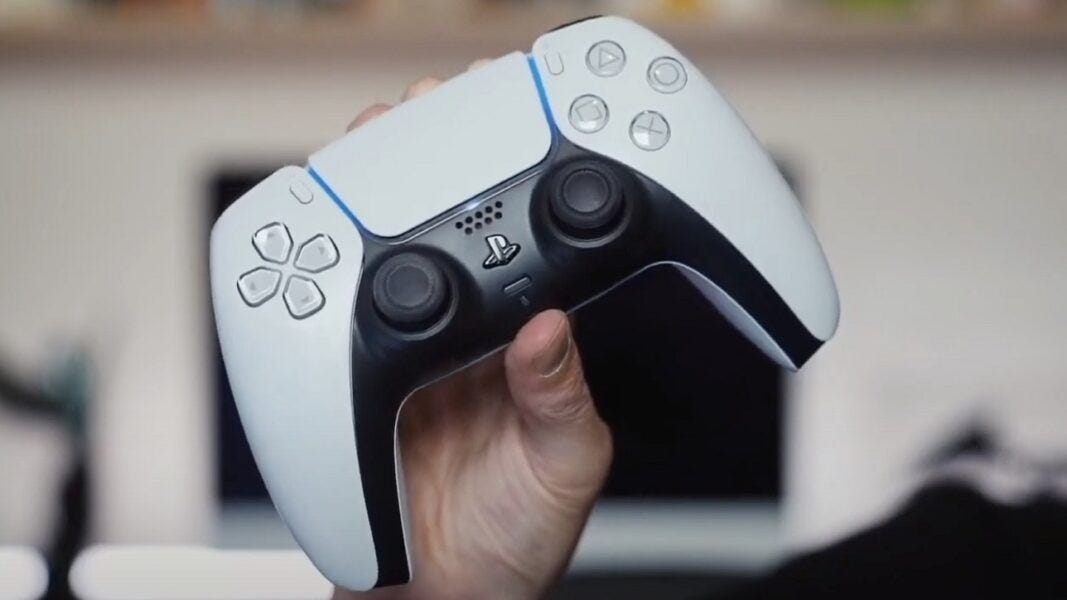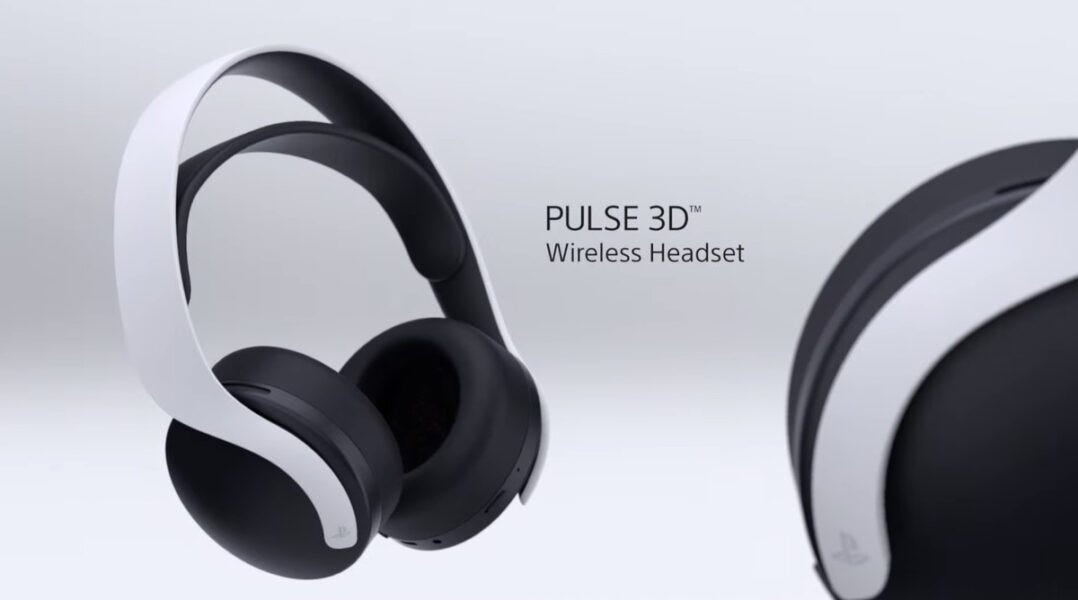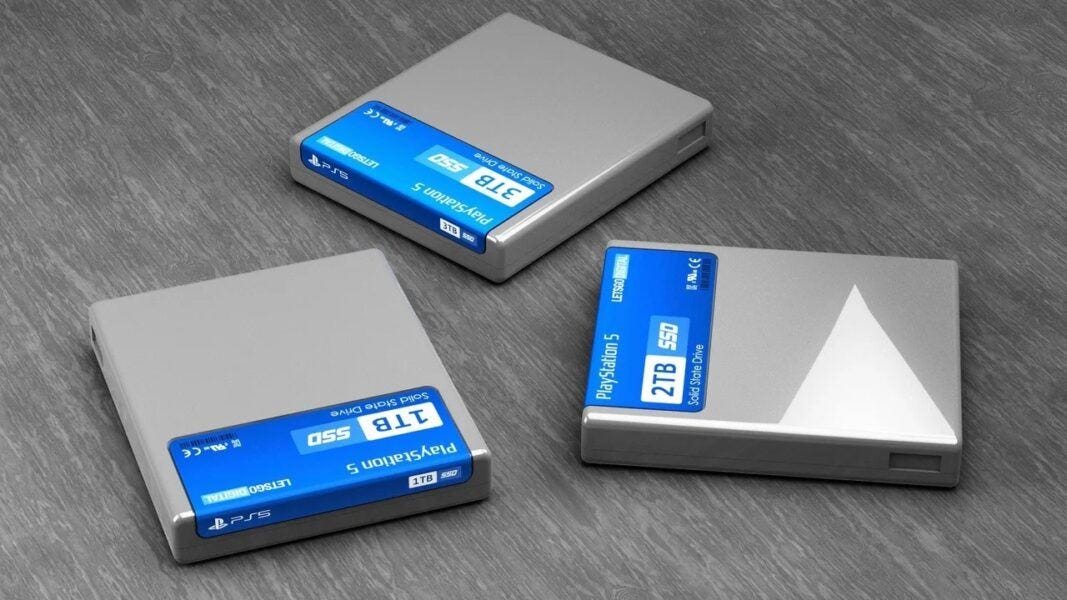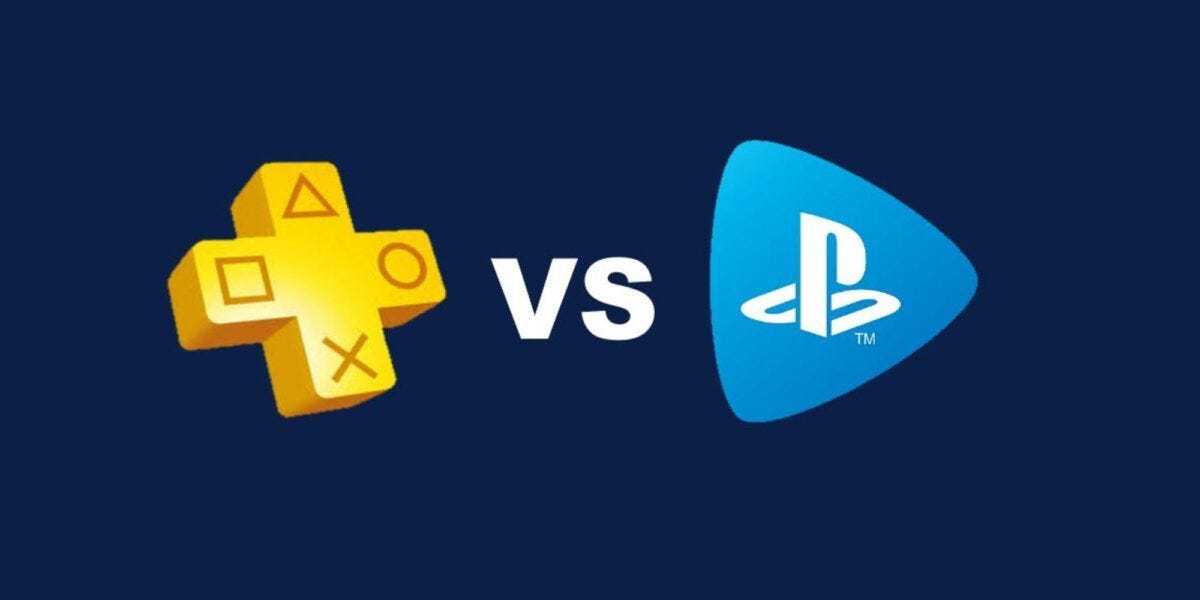PlayStation 5: Making your right choice with console and accessories
Click to read the full story: PlayStation 5: Making your right choice with console and accessories
In just one more day, the PlayStation 5 will be here. If you haven’t pre-ordered one, don’t worry, Sony is making sure to produce an extra million consoles as they know demand is extremely high for their high-powered gaming unit. The marketing hype actually measures up, but for those of you wondering what all you really need, which version suits you best, and if you even need one, we’ve got all the answers for you.
This is great for those of you shopping for that special holiday gift but don’t know anything about gaming or consoles. Don’t forget to check out all of our 2020 Holiday Gift Guides.
Yes, It Comes In Gold
For those that truly have it all, Sony PlayStation 5 will be out plated with 24K gold. Truly Exquisite is doing luxury customized limited editions in Platinum, 24K Gold, and 18K Rose Gold starting at $10,000. It’s fun just to look!
Where To Begin
The PlayStation 4 era, which started in 2013, is over. Unless you want a used console or encounter clearance stock somewhere, finding a PS4 will likely become more and more difficult. Although big PlayStation titles such as Horizon: Forbidden West and Spider-Man: Miles Morales will still launch on the PS4 in the next year, new-PlayStation shoppers have a new choice: the $500 PlayStation 5 and its somewhat slimmer sibling, the $400 PlayStation 5 Digital Edition.The $500 PS5 launches on November 12, 2020. Most preorders are already sold out, but you can check availability at the following store pages: Best Buy, Walmart, Amazon, GameStop
If you have a big collection of physical PlayStation 4 games, if you want to watch 4K Blu-ray discs on your console, or if you’re a deal hunter looking for discounted new and used games on disc, you should get the standard PlayStation 5 so that you can use its UHD Blu-ray drive.
The $400 PS5 Digital Edition launches on November 12, 2020. Most preorders are already sold out, but you can check availability at the following store pages: Best Buy, Amazon, GameStop
The PlayStation 5 Digital Edition costs a hundred dollars less, and other than its lack of a UHD Blu-ray drive, it does everything the standard version does. If you don’t want to spend $500 on a new console, if you don’t buy or watch movies on UHD Blu-ray, or if you don’t care about disc-based games, the Digital Edition might make more sense, especially for anyone who takes advantage of a PlayStation Now game subscription.
If the only reason you’d buy a new console is for brand-new games that you can’t play on your existing PlayStation 4, you probably don’t need to rush into the next generation just yet. Games that take advantage of the PS5’s upgrades are still just trickling out. But if you spend a lot of time with your PlayStation 4 now and are ready for immediately noticeable improvements in console boot times, game loading, and some performance and visual improvements in the games you already have, you can get that on a PlayStation 5 right now and leave little of your PlayStation 4 library behind.
What’s the difference? PlayStation 5 vs. PlayStation 5 Digital Edition
The PlayStation 5 and the PlayStation 5 Digital Edition are almost identical to one another, with the same internal components save the inclusion of a UHD Blu-ray drive in the main version. That UHD drive carries a premium, though—the PlayStation 5 is $500, a full $100 more than the PlayStation 5 Digital Edition. However, we’re concerned that the hundred dollars in savings for Digital Edition buyers may evaporate in the long run.
Digital downloads and retail discs see about equal sales numbers for high-profile games. Although digital games go on sale more often than they used to, disc games still go on sale at steeper discounts in more places more often. And just as important for some players, disc-based games can be bought, sold, and traded. If you can save $20 per game by buying used discs, the more expensive PlayStation 5 pays for itself after five used games—something that seems likely over the life of a console.
Deciding to upgrade from a PlayStation 4
On top of its basic quality-of-life additions, the PlayStation 5 will provide new games that are simply not possible on the PlayStation 4 and Xbox One—eventually. For now, though, there aren’t many brand-new experiences exclusive to the PS5, which isn’t unusual for a console launch. Instead, you’re mostly getting prettier, better-performing versions of games—sometimes significantly better—that will usually be available on other platforms, as well.
For example, although Spider-Man: Miles Morales has some next-gen graphical features like ray tracing (and looks great, don’t get us wrong), it’s also launching on the PS4. Demon’s Souls looks stunning, but it’s a remake of a PlayStation 3 title from 2009. You’ll probably be waiting until the spring of 2021 and the debut of Insomniac’s Ratchet & Clank: Rift Apart for something truly, wildly different.
New games with great graphics (eventually)
It might be some time before you see huge differences from what the PlayStation 4 could produce, but the PlayStation 5 does feature a new generation of graphics hardware that is much more powerful than the components of previous-generation consoles, and the results should still be noticeable in a variety of ways. In most new games, you can expect higher resolutions, higher frame rates, and more detailed characters and environments, all with better image quality. Effects should also be more pronounced and sophisticated, as the new graphics hardware in these consoles can manage greater amounts of fancy tricks such as smoke and fog that has physical properties and lighting that behaves and reflects more like light does in the real world.
That last part is particularly likely to improve as the generation progresses. The PlayStation 5’s GPU is capable of hardware-accelerated ray tracing, a type of graphics rendering that allows for much more sophisticated visual effects and lighting. Launch titles such as Spider-Man: Miles Morales use ray-traced reflections for much more realistic reflective surfaces, as does Ubisoft’s Watch Dogs: Legion. But ray tracing has been referred to for years as the “holy grail” of video game graphics, and developers have only scratched the surface of what they’ll achieve with it in the next several years.
Higher frame rates paired with faster, more responsive performance
Even if games aren’t taking advantage of all the graphics improvements right away, the hardware improvements of the PlayStation 5 will be noticeable in other ways. The PS5 has a dramatically more powerful CPU—in the neighborhood of four times as powerful as its predecessor in raw speed and the number of cores and threads, to say nothing of seven years’ worth of efficiency and other improvements. This means faster user interfaces, faster load times, more sophisticated character and game behaviors, and just more stuff on screen at any given moment.
But the biggest improvements will be most apparent in frame rates, which should hit 60 frames per second much more often than on the PS4. The more frames per second, the more often the controller and the game are communicating, which means more-responsive controls.
A number of games originally released for the PlayStation 4, such as 2018’s God of War and 2020’s Ghost of Tsushima, include “performance” modes that have unlocked frame rates, and these games and many others will see huge improvements in performance and responsiveness on the PS5.
Shorter load times thanks to faster storage
As on the new Xbox Series X and S, all your games and saves on the PlayStation 5 will be stored on a much newer and much faster type of storage, based on NVMe technology. This component should bring a huge improvement in console startup, game bootups, and even in-game load times. We’ll be interested in clocking these differences for ourselves.
A new user experience
The PlayStation 5 features a new user interface that Sony has designed to take advantage of the console’s solid-state storage and faster CPU to allow for faster navigation and some new features.
As soon as you boot up the PlayStation 5, the difference is clear. The PS5 transitions from fully powered off to its user login screen in just over 20 seconds or so, and it comes back from standby mode in about six seconds, a considerable improvement over previous-generation consoles.
Once you log in, you’re greeted by an overhauled dashboard. The cross-media bar of the PS4 has transformed into several quickly accessible groups, arranged into buckets like games, media apps, and settings. Hitting the PlayStation button on the PS5’s DualSense controller now brings up something called the Control Center, which is intended to immediately surface the most common and important options most players need while they’re using the system. This panel includes notifications, music playback controls, audio levels for headset wearers, friends lists, and system standby.
The new Activities feature allows developers to provide informational windows and progress trackers in game, including picture-in-picture video playback for titles that support it. Plus, developers can provide instant jumping-on points from the dashboard, so you can, for example, open multiplayer mode without traversing additional game menus—if, that is, the game in question supports the feature. The PS5’s system software also includes a setting that (for reasons beyond our understanding) we haven’t seen since the Xbox 360’s launch in 2005: You can tell the console to default to certain settings in PS5 games—such as inverted look controls, first- or third-person view, and other commonly tweaked preferences—so you don’t have to change them game by game.
The new OS is an attractive change of pace from the PS4, and in some ways it’s faster to navigate than its predecessor. If you’re trying to get to a game or app as quickly as possible, you’ll need to press far fewer buttons to do it. But once you want to do anything more involved, it’s still quite a lot of navigation to get where you might want to go. Still, we appreciate that the PlayStation 5 is providing a superficial but appealing bit of new-console smell.
We’ll have more to say in the coming weeks about the PlayStation 5’s user experience as we get more time with the final version of the software.
Choosing accessories for the PlayStation 5
Controllers
The PlayStation 5 comes with a new controller that Sony is calling the DualSense. It retains the touchpad and share buttons from the DualShock 4, along with the same basic layout, but Sony has also made some significant changes. The DualSense is somewhat larger than its predecessor, closer to the size of Microsoft’s Xbox controllers of the past decade or so, with bigger face buttons, tighter sticks, and more pronounced triggers. Sony has also added a light texture on the back side of the controller grips, much as Microsoft has on the Xbox Series X and S controllers.
But the big changes are inside. The DualSense has added resistance in its triggers, which games can use and customize to create different kinds of feedback to increase immersion. Instead of using vibrating motors, the DualSense uses coil actuators for a similar though more varied effect. It also once again includes a speaker, a built-in microphone array (with a noise-cancelling mic on the bottom of the pad), and a USB-C port for charging.
The results range from fun and minor to almost transformative in certain circumstances. The included speaker is of much higher quality and makes sound effects coming out of the controller much more tolerable than they were with the DualShock 4. In turn, these sounds pair with nuanced vibration that provides a level of physical feedback that’s nearly textural. The haptic triggers are also capable of providing a remarkable amount of tension, which games are able to use in a variety of ways that we’ll be able to discuss in more detail later. You’ll be hearing a lot about this controller over the coming weeks, we’re sure, and the PS5 even comes with Astro’s Playroom, a simple-looking game with adorable platformer gameplay designed to demonstrate all of the DualSense’s various features.
Headsets
If you already have, or are planning to buy, a standard gaming headset with a ⅛-inch connector, it will continue to work if you plug it directly into the PlayStation 5’s DualSense controller. For game sound and chat via USB, you need an officially licensed headset (though the audio-balance controls may or may not work on a case-by-case basis).
Sony PS5 Pulse 3D wireless headset
The best way to embrace PS5’s new Tempest 3D AudioTech
Acoustic Design: | Drivers: | Weight: | Compatibility:
Official companion accessory
Potential of Tempest 3D AudioTech
Easy to use
Very comfortable
Built-in microphone could be better
Sony’s official PS5 headset is, unsurprisingly, a top performer. Sharing the same design language and aesthetic that the PS5 and its accessories have, the Pulse 3D headset maintains a subtlety in its form – there’s no extruding boom mic, and all the tech is discreetly hidden.
Underneath the stylish frame, however, you’ll find all the necessary tech to immerse your self in the PS5’s Tempest 3D AudioTech, with the Pulse 3D headset being the best way to get the most from your new console’s audio. In practice – and with only a couple of game’s to test it on, it should be noted – the headset delivers gloriously rich and detailed sound as you traverse Astro Playroom’s noisy noisy platforms, and gives multi-layered audio detail in the roar of combat in Miles Morales.
However, it is in the quieter moments that the Pulse 3D headset and the PS5’s Tempest audio magic really combines to create magic: spaceships zooming past your head in Astro, or footsteps’ exact direction of travel being discernible in Miles Morales. Early signs are awesome and we can’t wait to see how this tech is deployed in the Pulse 3D headset in the likes of Resident Evil Village, Demon’s Souls and Gran Turismo 7. A high-bar has been set early, and the PS5 headset market already looks like strong one with the Pulse 3D headset kicking things off ‘officially’.
Just like the new Xbox consoles, the PlayStation 5 lacks the optical audio output that the PlayStation 4 and other previous-generation consoles included. That means gaming headsets and audio receivers can’t connect to a PS5 via optical audio (the D-shaped port) as they could with past consoles. However, many headset manufacturers are expected to offer firmware updates to enable proper USB support for the PlayStation 5 in their existing headsets. If you have a headset that supports USB, do a quick Google search to make sure it’s officially supported. This situation is likely to change eventually as hardware manufacturers have more time to get a handle on the new consoles.
Storage
The PlayStation 5’s internal storage consists of an NVMe-based custom memory component with a base capacity of 825 GB. However, after accounting for the operating system and other system files, the PS5 leaves only 667 GB of usable storage space for games. That storage space could fill up quickly, with games like Call of Duty: Black Ops Cold War eating up 133 GB of that drive and many other games taking up 50 GB or more.
Unfortunately, for the time being it’s mostly bad news for people who want more room for their PS5 software. The PS5 includes an expansion slot for a particularly fast type of drive that you’d ordinarily put in a regular desktop PC (an NVMe drive via an M2 expansion slot). However, that slot is currently disabled until Sony determines what drives meet the transfer-speed requirements needed to match the storage component inside the PS5. Until Sony puts out a list, buyer beware. And as of this writing, PS5 software cannot be moved to any form of external storage, even as an archive to avoid having to re-download a game in the future. The PS5’s UI will inevitably see updates, and it’s conceivable that Sony could add this feature before long (and possibly in time for the launch on November 12), but for now you’re stuck with the built-in storage.
For backward-compatible titles, however, there are external storage options. Drives occupying the middle ground are plenty fast, at least, and likely to be cheaper than upgrading additional NVMe storage down the line. You can play PS4 software directly from an attached SSD. Just plug in an external, portable SSD drive, such as the Samsung Portable T5 SSD we recommend, another similar drive, or a plain SSD attached via a USB-to-SATA cable.
If you’re most concerned about storing a lot of PS4 games for later, a USB hard drive like the Seagate Backup Plus Slim or the Western Digital My Book is your most affordable option. Load times will be only somewhat better than on the PlayStation 4, and you can’t use such drives for PS5 software, but you can’t beat the price per gigabyte.
Any drives you’re already using with a PlayStation 4 console should work on the PlayStation 5. Plug them in, and compatible PS4 games you have installed will appear automatically and should be playable barring any required updates.
Subscriptions
Monthly
retail priceAnnual
priceOnline
multiplayer accessFree games
while subscribedStream games
to console or PCPlayStation Plus$10$60YesTwo per monthNoPlayStation Now$10$60Only on PS Now gamesHundredsYes
Anyone who wants to play online multiplayer games needs a PlayStation Plus subscription. PlayStation Now is more like Netflix for video games.
PlayStation Plus and PlayStation Now
If you’re at all interested in playing multiplayer games on the PlayStation 5, a subscription to PlayStation Plus remains indispensable. Though Plus offers access to at least two free games per month, the quality of those games is unpredictable. However, Sony is sweetening the pot for early adopters of its new console: PS5 PS+ subscribers will receive access to the PlayStation Plus Collection, which consists of more than a dozen highly rated older PlayStation 4 titles.
If you get a PS5 Digital Edition without the disc drive, or if you never had a PS4 and want to explore all the currently available games at a low price, PlayStation Now, Sony’s on-demand game-subscription service, might make sense for you. PS Now provides streaming access to a collection of PlayStation titles, including a number of PS3 titles (the only way PS3 native software will probably ever be playable on the PS5), and it offers downloadable access to a number of PlayStation 4 games that will also be playable on the PS5. Sony doesn’t commit to timely releases of some major games to PS Now the way Microsoft commits to that on its equivalent service, Game Pass. But the PS Now library still offers access to hundreds of games. Of course, you lose access to them if you cancel your subscription.
The post PlayStation 5: Making your right choice with console and accessories appeared first on Movie TV Tech Geeks News By: Jeffrey Lang



